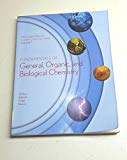
Interpretation:
It should be determined that how are long chain fatty acids released from triacylglycerides transported through the blood stream.
Concept introduction:
Fatty acids are aliphatic mono-carboxylic acids that are mostly obtained from the hydrolysis of natural fats and oils. They have a general formula
Fatty acids are highly water insoluble. Therefore it must be transported in blood in with a protein.
Albumin, globulin and fibrinogen are the three types of plasma protein.
Triacylglycerides consisting of three molecules of fatty acids bound with one molecules of glycerol; a neutral fat that is the usual storage form of lipids in animals.
Want to see the full answer?
Check out a sample textbook solution
Chapter 24 Solutions
Fundamentals of General, Organic and Biological Chemistry Volume 1, 5th custom edition for Spokane Community College
- How Are Unsaturated Fatty Acids Oxidized?arrow_forwardHow do the pathways for the synthesis and breakdown of glycogen differ in liver and muscle? How does this relate to the function of stored glycogen in the two tissues?arrow_forwardDoes the synthesis of fatty acids occur in the adipose tissue and liver? How?arrow_forward
- What does it mean for fatty acids to be essential? What are the essential fatty acids?arrow_forwardWhich tissues carry out fatty acid oxidation as their primary source of energy?arrow_forwardHow does adipose tissue metabolize absorbed triglyceride, and what are the three major sources of the fatty acids in adipose-tissue triglyceride?arrow_forward
- What is the consequence of ingesting large quantities of watersoluble vitamins? Fat-soluble vitamins?arrow_forwardHow does ketogenic diet affect the human physiological processes, particularly in the regulation of lipids?arrow_forwardWhat are the possible fates of the amino acids from protein catabolism?arrow_forward
